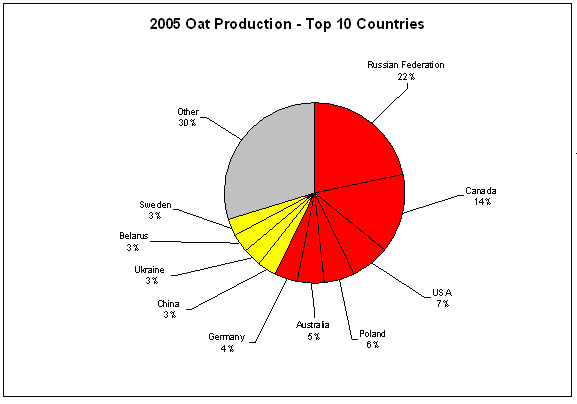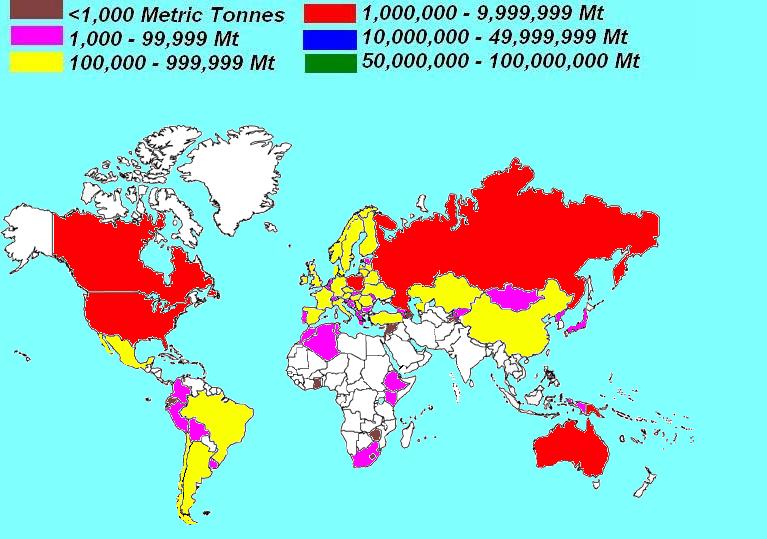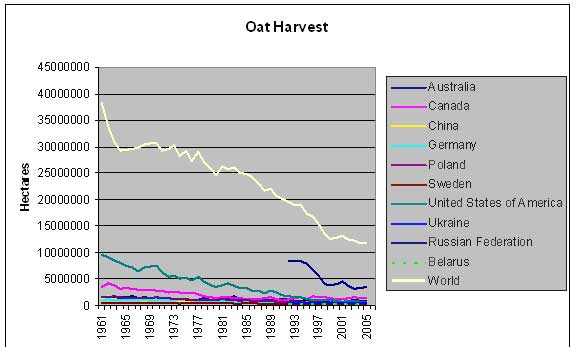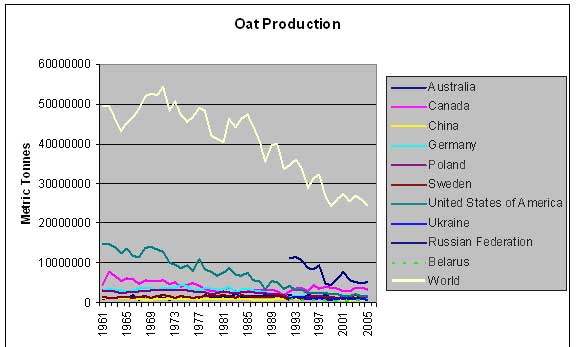![]() Species |
Rice |
Maize |
Wheat |
Barley |
Oats |
Foxtail Millet |
Pearl Millet |
Rye |
Sorghum |
Wild Rice |
Brachypodium |
Oryza Species |
Grape |
Arabidopsis
Species |
Rice |
Maize |
Wheat |
Barley |
Oats |
Foxtail Millet |
Pearl Millet |
Rye |
Sorghum |
Wild Rice |
Brachypodium |
Oryza Species |
Grape |
Arabidopsis
![]() Oat Introduction |
Facts |
Anatomy | Taxonomy |
Agronomic Statistics |
Research |
Education |
Nutrition |
Recipes |
News |
Germplasm Resources |
Gramene Statistics |
Gramene Queries
Oat Introduction |
Facts |
Anatomy | Taxonomy |
Agronomic Statistics |
Research |
Education |
Nutrition |
Recipes |
News |
Germplasm Resources |
Gramene Statistics |
Gramene Queries
Figure 1*  |

|
| Figure 1 (above left) shows the top oat-producing countries for 2005, and the map in Figure 2 (above right) show production levels for all countries reporting oat production in 2005. As you can tell by the distribution map, oats are particularly well suited for cooler moist areas (4), although they can be grown in many climates.
Figures 3 and 4 show that the overall trend in oats is to have more than halved in land area dedicated to oat production since 1960, and to have therefore cut production by about half. Because they are mainly grown for animal feed, part of this reduction is accounted for because of the replacement of horse power by machines (6). (See also Oat Nutrition for usage statistics (animal feed vs. human consumption) and Doorway to the Land of Avena for listings of other uses.) Perhaps as the health benefits of oats becomes better known, human consumption will increase.
|
|
Figure 3*  | Figure 4* |
* FAOSTAT data, 2005
References: